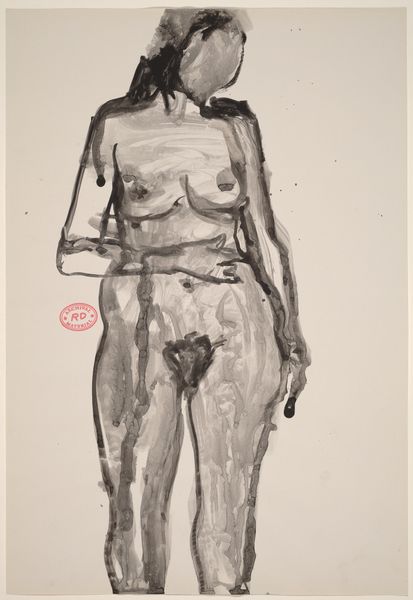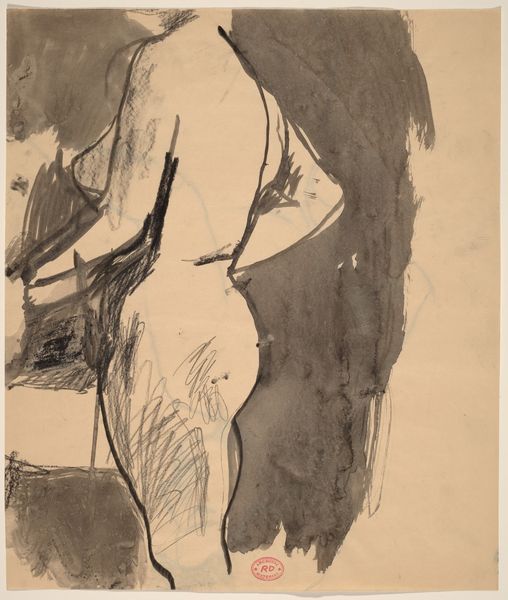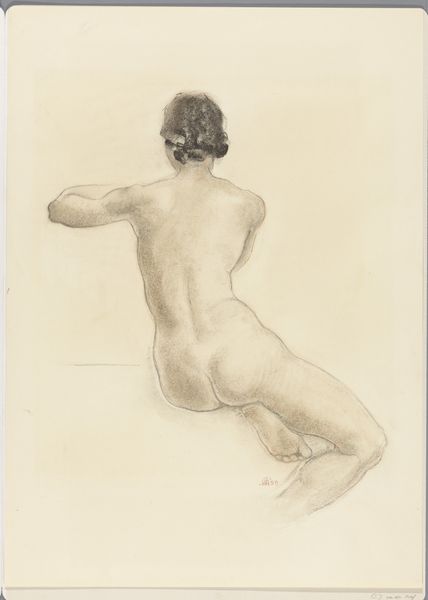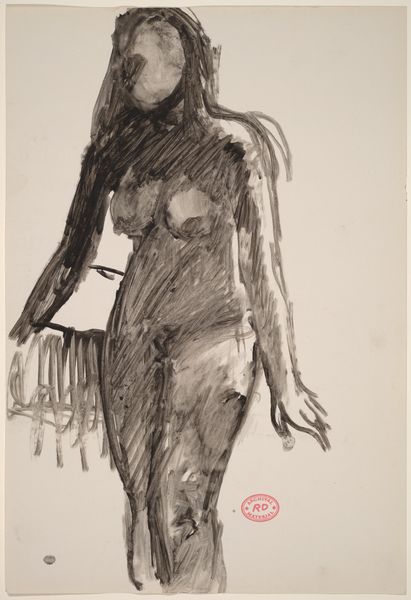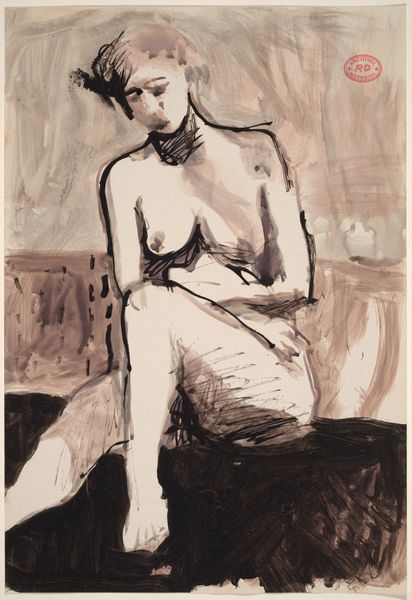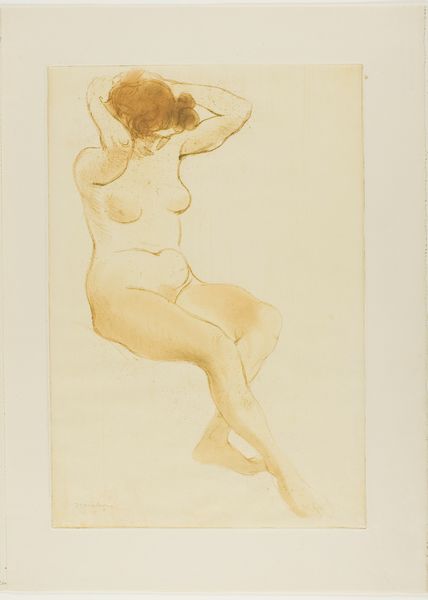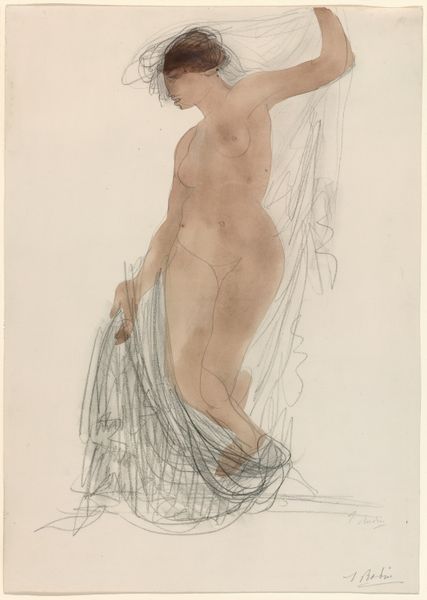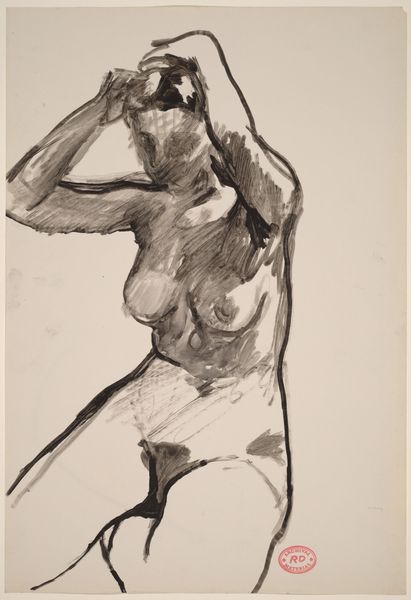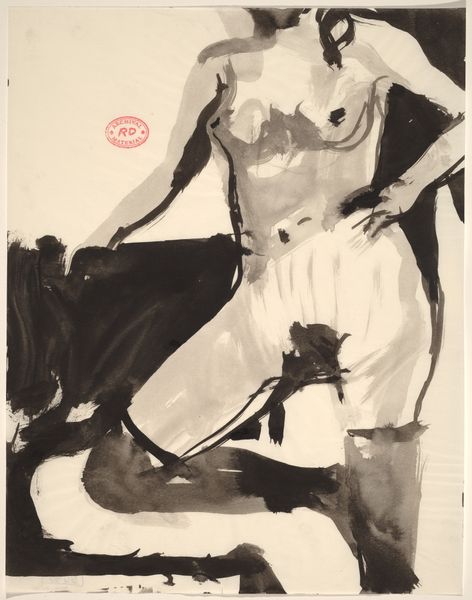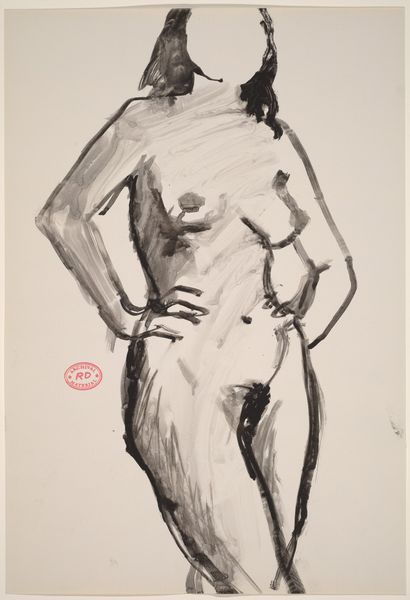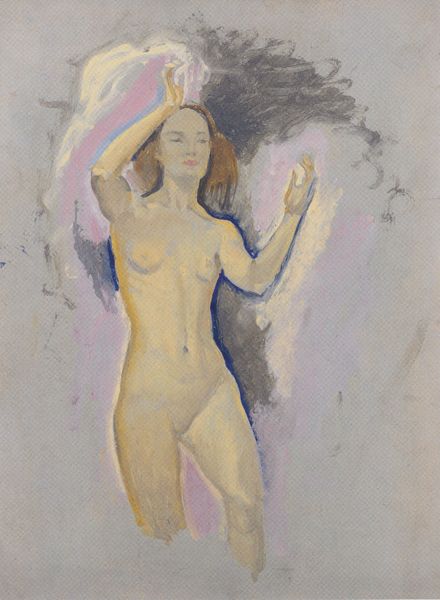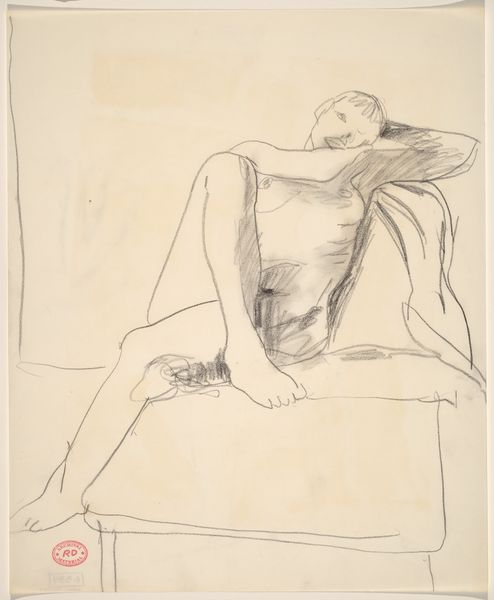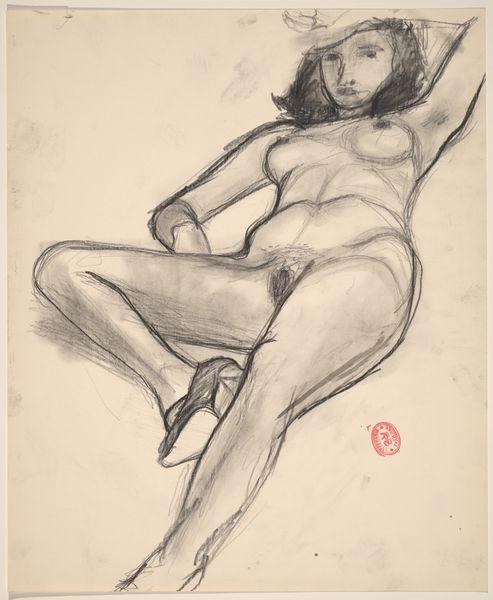
Dimensions: 210 mm (height) x 175 mm (width) (bladmaal)
Editor: This is "Standing Female Model," a watercolor and pencil drawing by Karl Isakson, dating from 1904-1907. The figure seems both delicate and unfinished. What strikes you about it? Curator: The unfinished quality you noted is key. Consider the materials: watercolor and pencil. These aren't the media of grand historical paintings, but rather of sketches, studies. This choice is a deliberate leveling, challenging the hierarchy of what's considered "art." Think about the labor involved; it’s not the painstaking process of oil painting, but a more immediate, almost casual act. Editor: So, you're focusing on the physical making of the piece rather than what it represents? Curator: Exactly. The image itself – a nude – has a long and loaded history within academic art. By choosing such ephemeral materials and an incomplete form, Isakson disrupts that tradition. He draws attention to the *process* of making, revealing the choices, erasures, and revisions inherent in creating even a seemingly straightforward representation of the body. This shifts the focus away from idealized beauty and towards the labor and material reality behind it. Editor: That’s fascinating. So, instead of seeing just a nude, we're meant to think about Isakson's actions, his choices in materials and methods? Curator: Precisely! It encourages us to question the means of artistic production. What labor went into this? What societal assumptions shaped Isakson's choices of subject and material? And how does our act of viewing further shape the work’s meaning and value within the broader context of art and consumer culture? Editor: I hadn't considered the implications of the materials that deeply before. It gives the sketch a whole new dimension. Curator: Indeed. By analyzing the material conditions of its creation, we uncover a layer of meaning beyond the purely aesthetic. There's a quiet rebellion in using these modest means. It allows us to re-evaluate what constitutes ‘high art.’
Comments
No comments
Be the first to comment and join the conversation on the ultimate creative platform.
